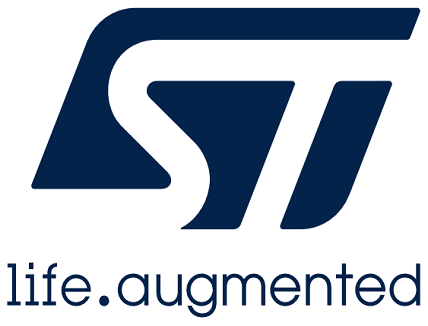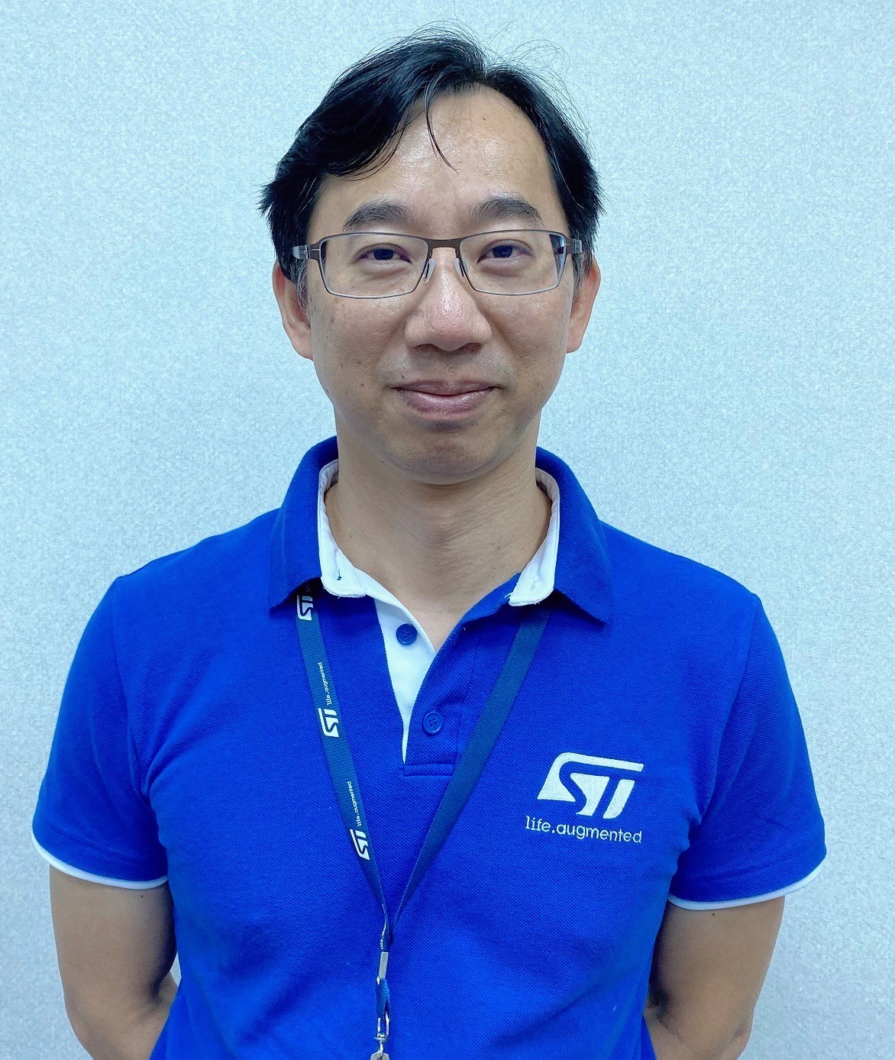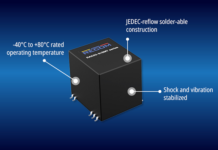
At the electronica event held this year in Bengaluru, STMicroelectronics presented a diverse range of demonstrations, offering a comprehensive look at its extensive portfolio in the realms of smart mobility, power management and IoT and connectivity.
These demos not only highlight the company’s technological prowess but also provide attendees with valuable insights into the innovative solutions shaping the future of smart mobility and efficient power management.
We bring some major attractions:
3kW High Density and High Efficiency Telecom Rectifier Solution
Features: The STDES-3KWTLCP is a 3 kW AC-DC converter designed for telecom rectifier applications. This type of application requires a high efficiency over the entire load range of operation and across the universal mains input voltage range. This reference design opens the path to a compact solution (up to 40 W/inch3), offering a high peak efficiency (96.3%), low THD distortion (less than 5% THD at full load), and a reduced bill of materials.
The system consists of two power stages: a bridgeless totem-pole PFC controlled by an STM32G474RBT6 and an isolating regulation stage implemented with a full-bridge LLC with zero-voltage-switching (ZVS) PWM, and synchronous rectification (SR) controlled by a second STM32G474RBT6 microcontroller.
The STDES-3KWTLCP also helps you to design an innovative topology with the latest ST power kit devices: silicon carbide MOSFETs, high-voltage MDmesh MOSFETs, STripFET MOSFETs, isolated FET drivers, and a VIPer converter.
Applications: 3KW Telecom Rectifier
ST’S vast portfolio of Time-of-flight (TOF) sensor
Features: Under the Imaging portfolio, ST showcased a Time-of-flight (TOF) sensor, specifically the VL53L5 CX model, designed for measuring the distance of objects. This TOF sensor is capable of providing 64 distance measurements simultaneously, making it a versatile tool for various applications.
Applications: The primary applications highlighted for this TOF sensor include gesture control and posture control. Gesture control allows for touchless interactions, such as left and right or up and down movements. Posture control is particularly emphasized in environments like the ongoing COVID-19 pandemic, where touchless switches are preferred. The sensor’s utility extends to automotive settings, envisioning its use in future car dashboards, which are becoming more display-oriented. In robotics, the sensor can contribute to road mapping by defining routes and avoiding obstacles.
Moreover, the sensor finds application in liquid level monitoring, beneficial for scenarios like coffee machines where knowing the water level is crucial. It’s noted that the sensor’s simplicity contrasts with its wide range of potential applications, suggesting numerous possibilities for its usage.
In summary, the VL53L5 CX model TOF sensor is a powerful tool for measuring distances and has applications in diverse fields, including touchless controls, automotive displays, robotics for road mapping, and liquid level monitoring for inventory management. The versatility of this sensor makes it suitable for numerous use cases, and there’s anticipation for discovering more applications, particularly in the Indian market.
Automotive Imaging: A Focus on Driver Monitoring
TMOS Technology
Vincent Lin, Technical Marketing Manager – AMS IMAGING, STMicroelectronics, APeC provided a detailed description of TMOS technology for infrared sensing and its applications, as well as information about a sensor with accelerometer and gyroscope capabilities, including its use in vehicle safety features, machine learning integration, and applications in smart devices like watches and toothbrushes.

TMOS technology appears to address limitations in traditional PIR sensors, particularly in scenarios where detecting stationary humans is crucial. The discussion also touches on the potential replacement of PIR sensors with TMOS due to its ability to maintain amplitude even when a person is stationary.
He also explains the sensor’s applications in vehicles, showcasing features like fall detection, anti-theft measures, crash detection, and dead reckoning for four-wheelers. The incorporation of machine learning in training the sensor to recognize specific events and behaviors is highlighted.
Furthermore, the sensor’s adaptability to various devices, such as smartwatches and toothbrushes, is discussed, emphasizing its role in gesture detection and other functionalities. The mention of a universal product that can interface with a range of sensors for data analysis and processing is also noteworthy.
Smart Mobility
ST also showcased various demos under Smart Mobility among which an image sensor demonstration was focused on automotive applications, particularly in driver monitoring. The significance of driver monitoring is emphasized, considering that many accidents result from driver-related factors. While Advanced Driver Assistance Systems (ADAS) primarily monitor external conditions, driver monitoring is gaining prominence. Some countries have regulations in place, with expectations that this trend will extend globally.
The sensors provided by the company aim to deliver high-quality imaging for effective driver monitoring. The improved image quality enables accurate detection, even capturing details like the direction of the driver’s gaze. Notably, the system can function seamlessly even when the driver is wearing a mask, showcasing its adaptability to real-world scenarios.
ST is working with various partners to offer comprehensive solutions to car manufacturers. Recognizing India’s strength in software development, they express optimism about collaborating with partners who can provide camera modules, creating a promising future for this technology in the Indian market.
Vincent Lin emphasizes the critical nature of driver monitoring, underscoring its potential to save lives. Overall, the dialogue highlights the company’s commitment to delivering advanced imaging solutions for driver monitoring while expressing confidence in India’s software development capabilities and the potential for fruitful collaborations.
Advancements in Battery Management Systems (BMS) and Voltage Management System (VMS) technologies
Under Battery Management System Demo ST shows, the AEK-POW-BMS63EN is a battery management system (BMS) evaluation board that can handle from 1 to 31 Li-ion battery nodes. Each battery node manages from 4 to 14 battery cells, for a voltage range between 48 V and 800 V.
Bipin Pande, Technical Marketing Manager, Automotive, STMicroelectronics, highlights ST’s long history and emphasizes its role as a pioneer in VCD (Voltage Cell Device) technology. This technology is considered advanced and forms the basis of their innovative approach to BMS.
The company’s commitment to progress is evident in its roadmap for analog front end devices, spanning from 5 cells to 14 cells, with ongoing developments for 16 and 18 cell BMS systems. In terms of architecture, the focus is on CLD (Coating Cell Device) devices, which have already undergone qualification under ASI and D standards, underscoring the safety-critical nature of BMS.
Internally, the company employs a structured approach, utilizing dedicated coating ADC (Analog-to-Digital Converter) blocks for each channel. This strategy enhances fault redundancy, allowing for the swift replacement of ADC in case of faults or malfunctions, ensuring continuous and reliable monitoring of all 14 instances.
ST Voltage Management System (VMS), emphasises fault redundancy through dedicated ADCs and the ability to swap channels in case of faults. They discuss the use of BCD technology for automotive applications and provide a reference design for analog front-end and ISO SPI devices. The fault management through dedicated ADCs and emphasizes the safety measures in place, including fast-response devices for airbag and BMS applications. The discussion extends to the challenges of BMS fires, focusing on thermal runaway and the industry’s efforts to address safety concerns at various levels.
ST also introduces the Stellar series of microcontrollers and showcases applications like stepper motor drivers, LED drivers, and friction control units. Finally, they delve into the digital aspect, emphasizing programmability, software-defined features, and the shift toward digital and electrification in the automotive industry. The discussion concludes with a demonstration of a simulation system for EVs to address safety concerns related to their silent operation.











